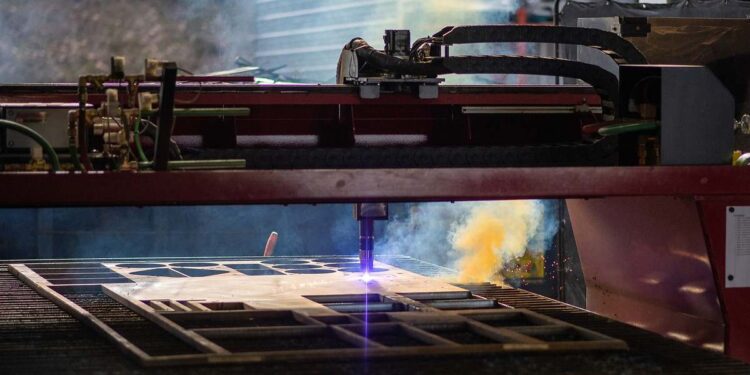The U.S. law that requires the Chinese firm ByteDance to sell TikTok to a U.S. or allied company is the latest example of tension between Washington and Beijing. The technology sector is also one of the main areas affected by the trade war between the two powers, which began in 2018 and is now going through a critical period, with China flooding international markets with cheap products thanks to Xi Jinping’s government subsidy policy. In this context, the Asian giant has decided to increase production to continue its economic growth path and avoid the negative effects of the real estate crisis and low domestic demand. This generates concern in the West, especially in the White House, where they are worried about Chinese overproduction, which they want to combat by imposing tariffs on certain products originating from Beijing.
Last April, Olaf Scholz, the German Chancellor, visited China and met with Li Qiang, the Chinese Prime Minister and second highest authority after President Xi Jinping. The German leader conveyed the concern, widespread in the Old Continent, regarding China’s overproduction in sectors such as electric vehicles. Qiang responded by reassuring that Chinese production of renewable technologies will help the world effectively execute the green transition. Additionally, the Chinese politician addressed concerns about the country’s oversupply, stating that moderate production exceeding demand leads to full free competition and “survival of the fittest”.
This statement is a clear declaration of intentions by China, at a time when the Asian country has decided to accelerate production. In this sense, industrial production increased by 6.1% in the first quarter of 2024. Specifically, the manufacturing sector grew by 6.7%, while high-tech manufacturing grew by 7.5%, representing a year-on-year increase of 2.6%, according to official data cited by the Xinhua agency.
In addition, industrial value added increased by 4.5% year-on-year, and profits of Chinese industrial companies reached $128.7 billion (914.1 billion yuan), a year-on-year increase of 10.2%. However, weak domestic demand, which may not be able to absorb all production, will likely push the Asian giant to rely on foreign demand to sell all its products. In this regard, Chinese exports increased by 7.1% year-on-year in the first quarter of 2024, surpassing analysts’ expectations.
However, this strategy raises concerns in the United States. During a visit to China in early April, Janet Yellen, U.S. Treasury Secretary, expressed concern about Chinese overproduction, largely fueled by public subsidies, stating that “when the global market is flooded with artificially cheap Chinese products, the viability of U.S. and other firms is compromised.”
Furthermore, Yellen pointed out that China is “too big” for the world to absorb all its enormous productive capacity. On the other hand, Wan Wentao, Chinese Minister of Economy, denied accusations of deliberate overproduction, stating that Beijing would act based on its legitimate interests. The fact is that the White House and its allies have reasons to be worried. Between 2015 and 2016, Chinese overproduction of steel caused a distortion in the global supply chain that affected international markets, after the economy of the Asian country slowed down.
This concern is heightened as steel exports are at their highest level since 2016: in 2023, Chinese steel companies increased their production by 36.2% compared to the previous year, reaching 90.3 million tons, the highest level in the last eight years, when stock market imbalances occurred in the Asian country. Additionally, this increase in production has strengthened China’s position in the global steel industry: the Asian giant now controls almost 55% of the world’s steel production.
In response to this situation, the Biden Administration wants to triple the tariff on Chinese steel imports, which currently stands at 7.5%. This was indicated by the White House tenant in a meeting held in April with members of the United Steelworkers union in Pittsburgh, one of the main cities in Pennsylvania, a key electoral state where the steel industry plays a significant role. The White House has also started discussions with Mexico to prevent China from sneaking its steel exports through that country. With this, Washington wants to protect shipbuilding, a key sector in which China accounts for 50.2% of global production, holding a position that the U.S. lost a long time ago after decades of lack of investment and outsourcing that began in the eighties.
It is worth noting that U.S. imports of steel from China are small, constituting 1% of the total, so Biden’s measure seems partly aimed at securing the votes of families linked to this sector. It seems clear that there is a political motivation in announcing an increase in tariffs on Chinese steel at this time. However, the U.S. is not the only country concerned about this issue. Thailand, the third largest destination for Chinese steel exports, initiated an investigation in 2023 into Beijing’s evasion of measures against unfair competition in exports of rolled steel of Chinese origin.


